She spread out her arms in glee as she stood on the land she owned. She was happy because this land was now nurturing new generations of a fast-disappearing species of bird – the critically endangered Great Indian Bustard (GIB). Eighty-five-year-old Mangli Devi Bishnoi and other Bishnois of the Khetolai village of Rajasthan’s Jaisalmer District had set aside a piece of land of around 35 hectares owned by them to allow the Bombay Natural History Society (BNHS) to set up a grassland reserve to protect the GIBs in their last remaining home in the Thar Desert.
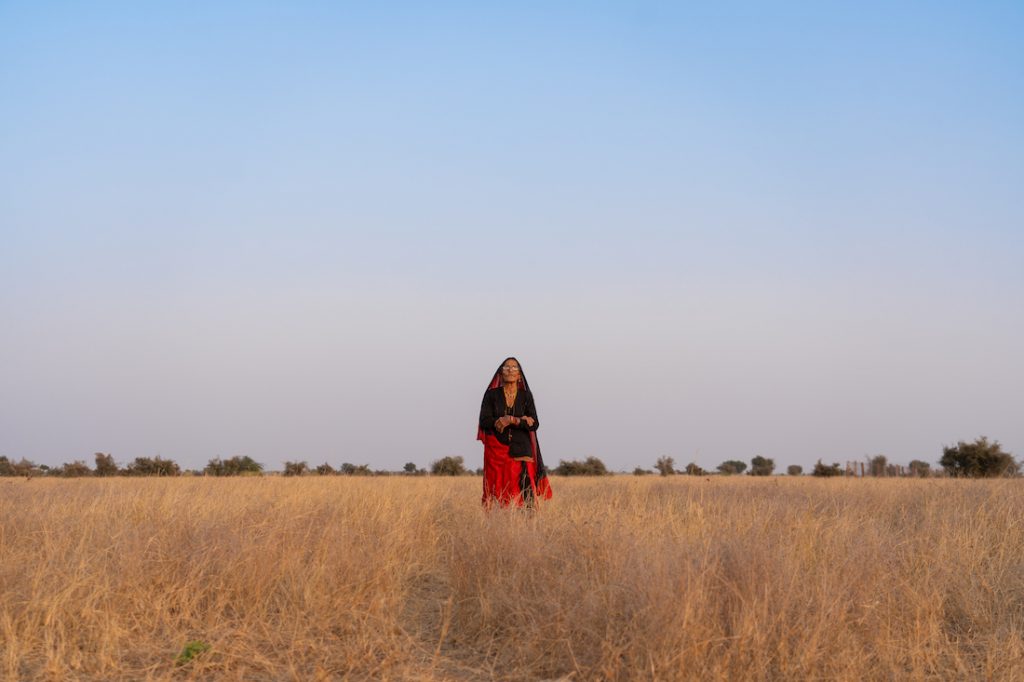
For the first time in twenty years, she was visiting this land again. She had come to meet us at the BNHS field base in Khetolai and share her story with us. In her younger days, she had toiled hard on this land with her husband to grow enough food to sustain her family. In the harsh desert environment, growing anything was always a humongous challenge. Water was a luxury back then. The villagers depended on Mother Nature’s blessings to grow crops like Jowar and Guar. If rainfall was optimum, they had good yields. If not, they had to suffer. Mangli Devi also pioneered the digging up of a borewell on the land to extract more water to meet the water needs of the crops. She had given a lot to this land and received much in return as well. Thus, the land was not just mere property to her. She shared a personal bond with the land that gifted her many treasured memories.
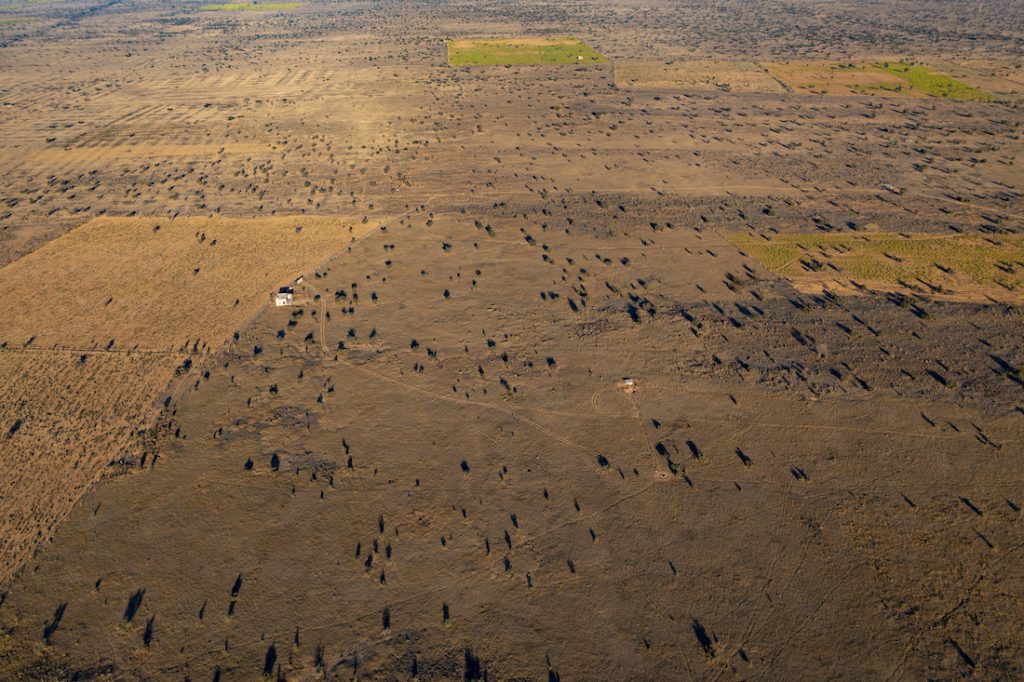
Yet, she and other Bishnoi villagers of Khetolai did not think twice before dedicating this land to wildlife conservation when BNHS researchers led by Dr. Sujit Narwade approached them with the idea of creating a grassland reserve in the area. They were, after all, Bishnois. They come from a long line of predecessors known for making great sacrifices to protect animals and plants.
For example, there is the tale of the Khejarli sacrifice, where 363 Bishnoi villagers led by Amrita Devi Bishnoi laid down their lives while hugging their beloved khejri trees. This massacre happened in 1730 when the villagers did not allow the local king’s men to cut the trees in their village to collect wood to build a fort. The merciless men chopped off the villagers along with the trees. This event is said to have inspired the Chipko Movement of 1973 and continues to motivate the Bishnois of today.
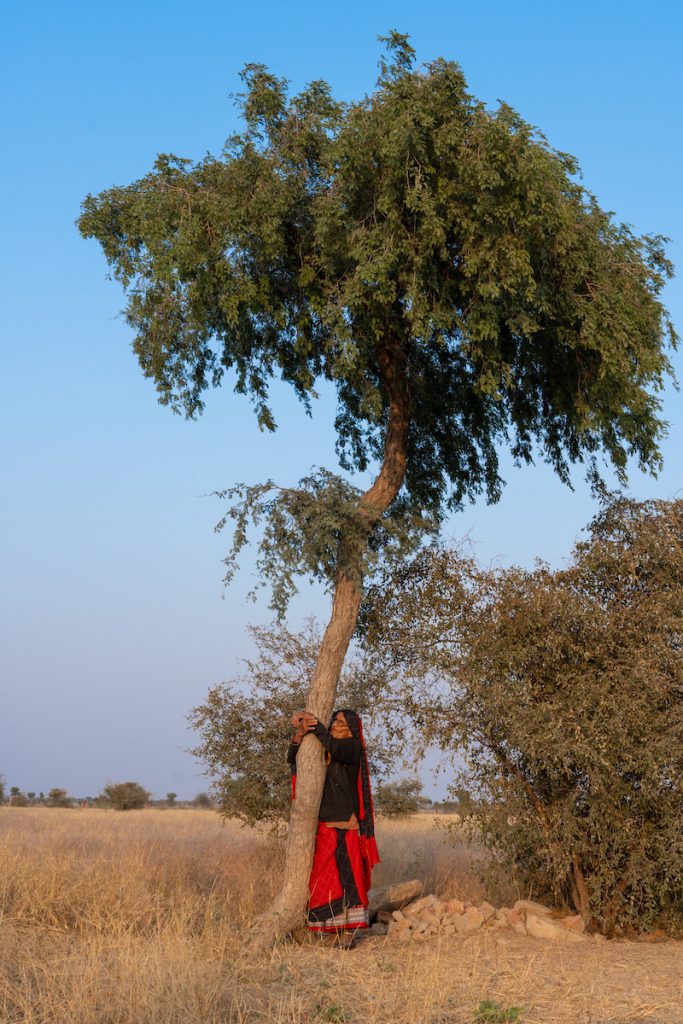
Then there is Nihal Chand Bishnoi, who, in 1996, made the ultimate sacrifice to save antelopes from a poaching gang. The poachers shot him when he tried to stop them from killing antelopes near his village. He was posthumously awarded the Shaurya Chakra Award by the Indian Army, becoming the first Indian civilian to receive this military award. Later, other Bishnois like Ganga Ram Isharwal were also awarded the Shaurya Chakra and other national awards posthumously for their ultimate sacrifice to protect wildlife.
All this and more happened because of “29 principles.” In the 16th century, the founder of Bishnoism, Guru Jambeshwar, taught his disciples 29 principles to follow in life. Bishnoism comes from ‘bis’ or twenty and ‘noi’ or nine. Among these principles were the teachings to protect animals, be strict vegetarians, and never cut green trees. Those who adhered to these principles became Bishnois.
Even today, every Bishnoi believes in the saying “Sir santhe rukh rahe to bhi sasto jaan“, meaning even if one has to lay down one’s life to protect a tree, it must be done as the tree’s life is way more precious.
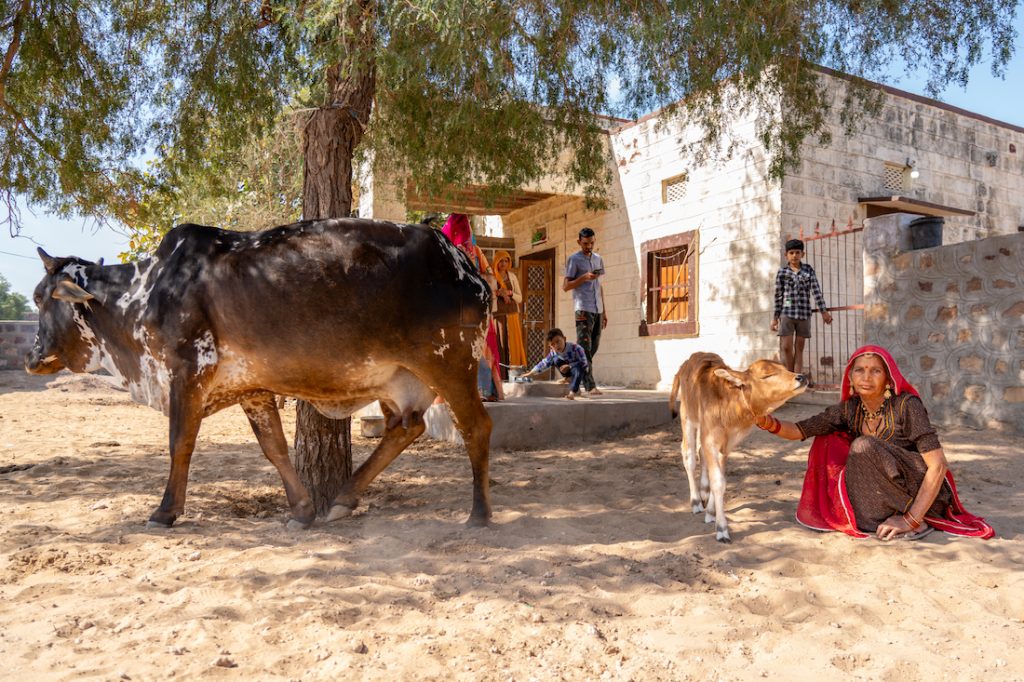
The Bishnois of Khetolai are also no different. For centuries, they shielded their wild animals, including GIBs, from hunting that was once rampant in India, especially during the British colonial era. Hence, the BNHS researchers did not need to convince them about creating a conservation reserve on their land; they were already convinced. For people who can happily die to save wildlife, wealth is their least concern. Instead of using the land to expand their settlements or grow crops, they permitted the BNHS to restore the degraded land to create a native grassland habitat as a refuge for the GIBs.
Today, Mangli Devi’s grandson, Pankaj Bishnoi, also carries forward the great Bishnoi legacy of protecting wildlife.
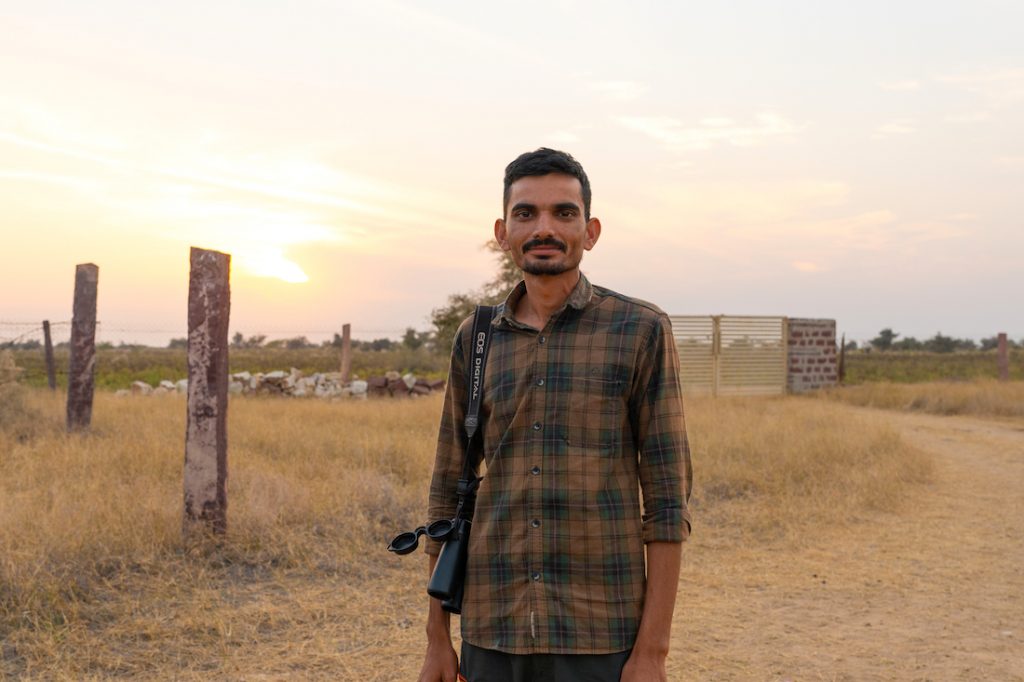
Pankaj and Sachin Bishnoi, Pankaj’s neighbour in Khetolai, work as the Community Engagement Officers for BNHS. While Bishnois of the past hugged trees with bare hands, these modern-day Bishnois are busy wrapping camera traps around trees to record the movement of wildlife as part of the efforts to conserve them.
Pankaj and Sachin, along with Dr. Neelkanth Bora (BNHS Programme Officer of the GIB and Lesser Florican Project), travel miles across the unforgiving Thar landscape to conduct surveys for the GIBs and create awareness about the need to conserve them. These birds, numbering less than 100 in the wild globally, are now primarily confined to the arid grasslands of the Thar. The populations are distributed primarily in two areas – in and around the Desert National Park, a protected area and in the unprotected landscape of the Pokhran Field Firing Range (PFFR) and its surroundings. The latter includes the village of Khetolai.
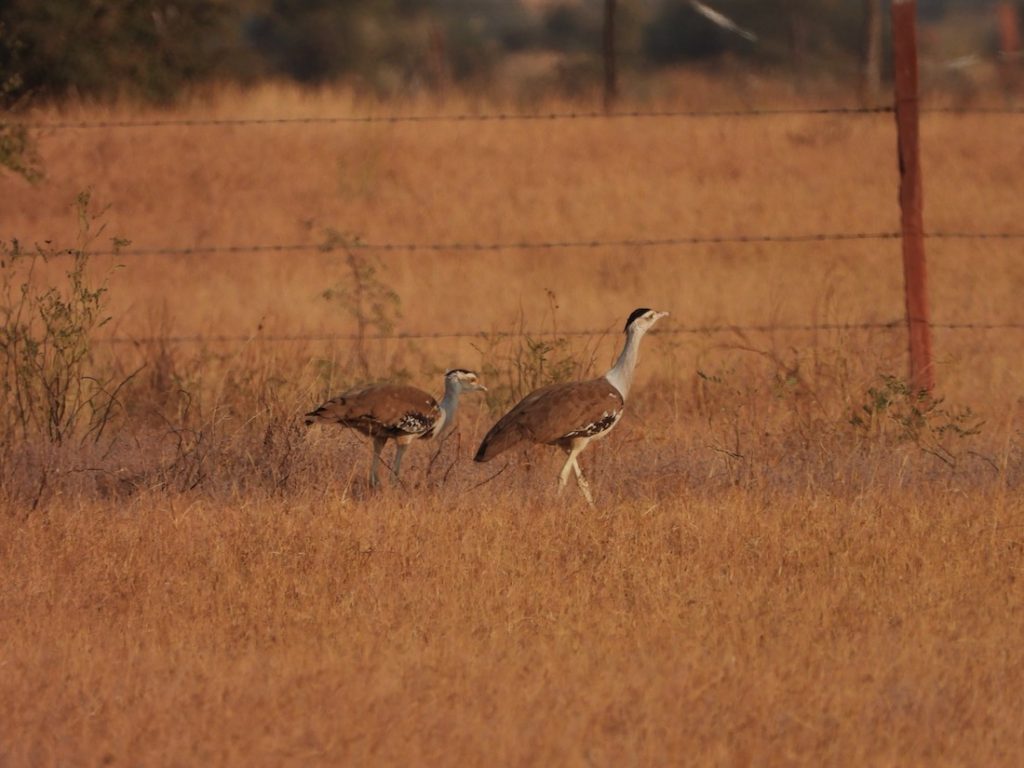
In this landscape, BNHS works with the Bishnoi community, the local forest department, and the Indian Army to safeguard the remaining GIBs. Their work is not easy. Unlike in the past, when nature reigned over the land, today, humans make the rules.
A major change came with the Indira Gandhi Nahar Pariyojana project that brought water to the Thar through its many canals. Land-use patterns then changed. Today, intensive agriculture, livestock grazing, linear infrastructural developments like roads, railways, and power lines, and renewable energy installations like solar power and wind turbines, threaten the survival of the area’s GIBs.
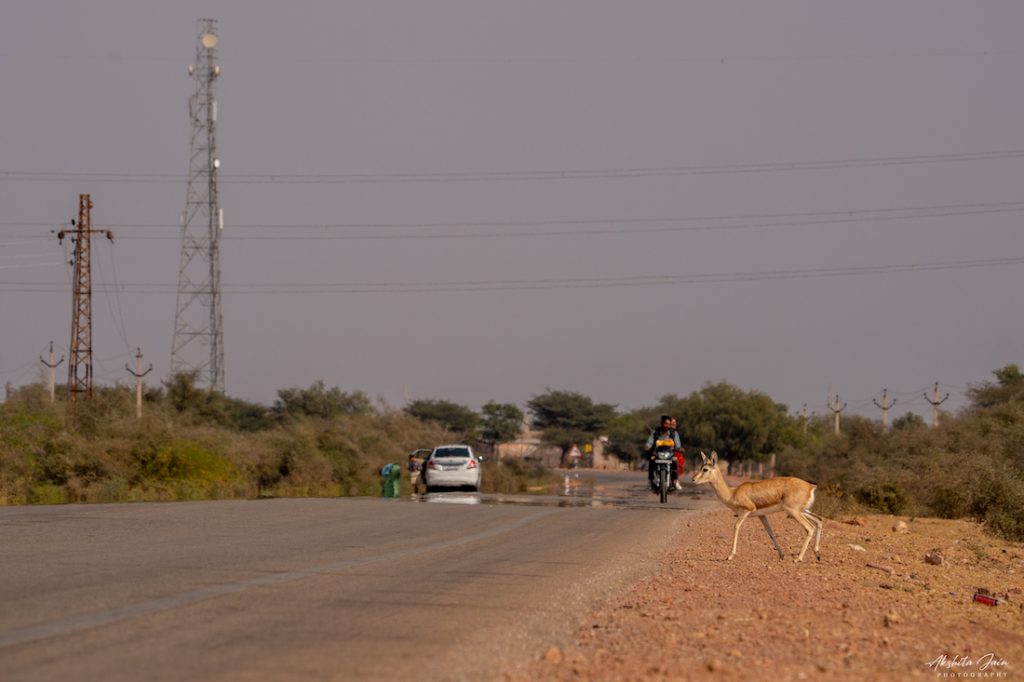
Much has changed, but the hearts of Khetolai’s Bishnois still beat for wildlife. Each generation of Bishnoi is taught to revere nature and her ways since childhood. Modern-day Bishnois are making good use of new-age gadgets and other technologies to do what they do best – conserve wildlife living around them.
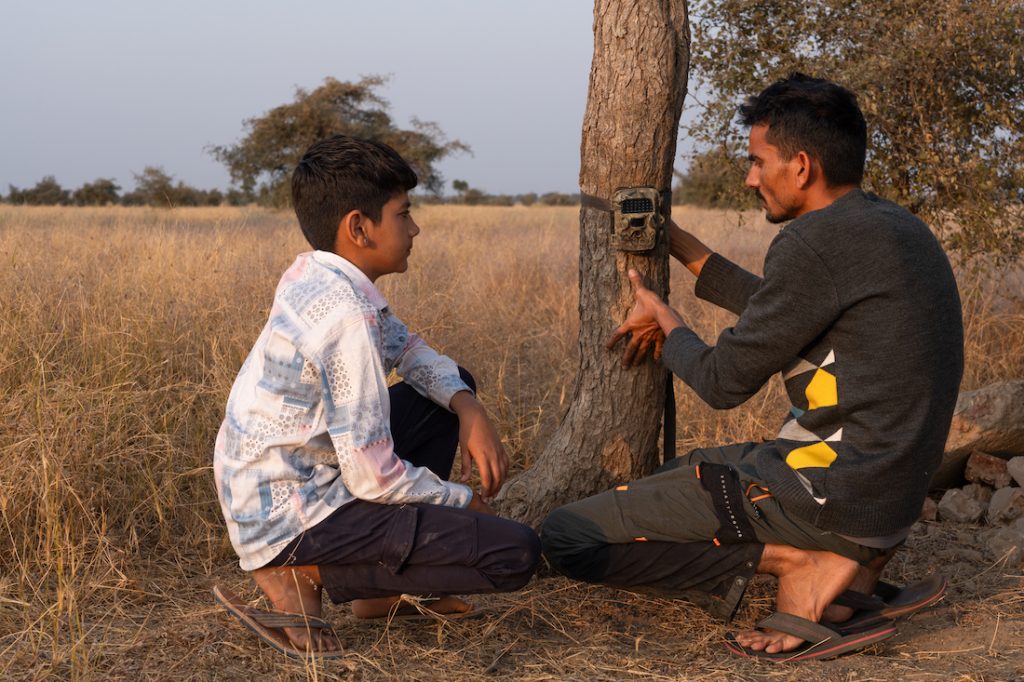
Pankaj is now teaching his schoolgoing nephew Divyansh to handle drones, camera traps, binoculars, and GPS systems to document the wildlife of the Thar and the conservation issues associated with them.
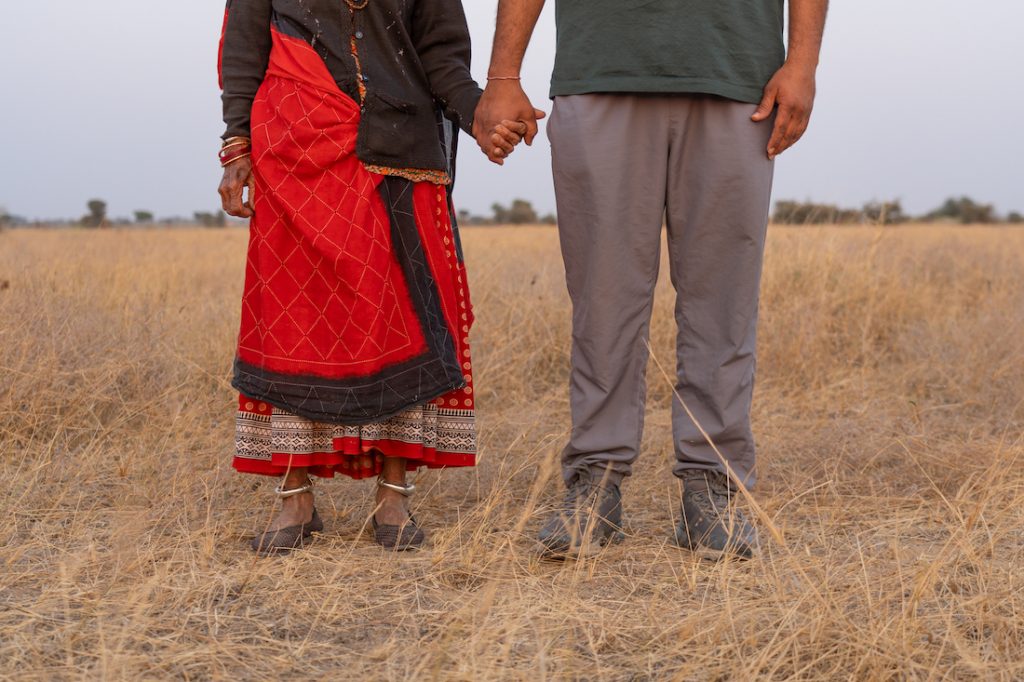
While we know that GIBs are racing towards extinction, the passion and dedication of generations of Bishnois like Mangli Devi, Pankaj, and Divyansh give us hope that it is not too late to save the birds. The conservation culture of the Bishnois, when united with modern-day science and technology used by BNHS researchers, can surely work wonders for the last GIBs of the world.
Article written by: Dr. Oishimaya Sen Nag
Photography by: Akshita Jain

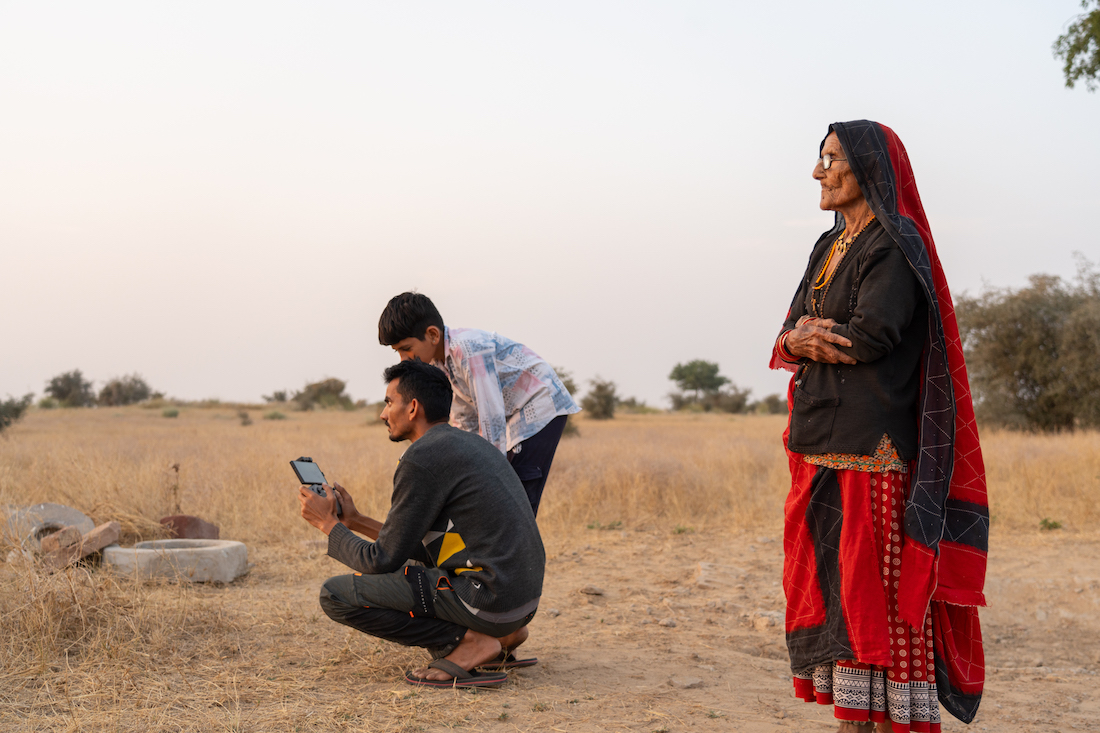
Thank you for writing about our work in your own words.
A great work indeed for nature and the wildlife ☀️